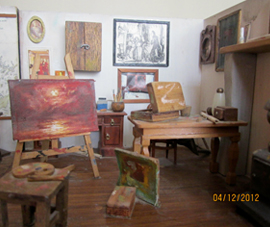
El caza historias
El último artista de la escuela quiteña
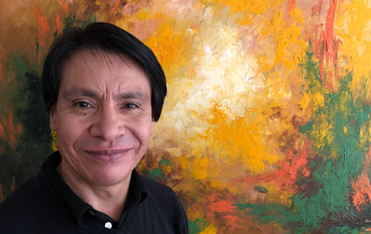
A Master artist, Heraclio Guevara is a present day master of the classic imagery perpetuated by the Escuela Quiteña (Quito School), an artistic tradition dating back to the time of the Spanish colonial period of the 17th and 18th centuries. Heraclio Guevara was born in San José de Minas, a small but beautiful village in the Ecuadorian highlands, not far from the Metropolitan District of Quito, on the seventeenth of September, 1966. There, he lived with his family until the age of fourteen. Encouraged by his parents and teachers he made the decision to study in the School of Fine Arts at the Universidad Central del Ecuador. He later completed his higher education in the School of Fine Arts at the aforementioned University. Completing his studies in 1990, his innate talent along with the education he received allowed him to remain as a teaching assistant in the area of engraving, and posteriorly lecture in the subject of shape and colour. In 1991 he opened his first experimental studio fusing the ancestral art of imagery with the techniques, mediums and resources of modern plastics and conceptual artistic language. His intellectual prowess, cultural awareness, creativity, sensibility, research and impeccable ethics have enabled Heraclio Guevara to consolidate himself as a Contemporary Master Artist of imagery with outstanding capabilities for expressing himself undividedly through the language of plastic arts. Presently, his art studio – gallery is educating high-level artists who with great effort and education may become the new representatives of this beautiful and sacred work.

El último artista de la escuela quiteña
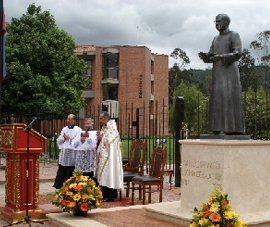
En el Campus de la Universidad de La Sabana (Colombia)
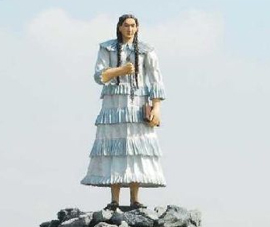
Todo listo en Nobol para canonización
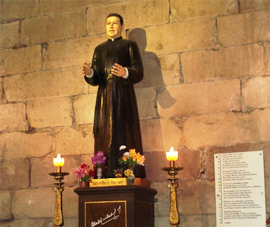
Imagen Padre Hurtado(Wikipedia).
Los tiempos han cambiado. Las sociedades evolucionan, se mueven, se transforman. El arte no es el mismo que el de los inicios de siglo, de hecho Quito fue una ciudad que deslumbró con arte desde sus principios como cabildo. La escuela quiteña fue una corriente muy popular durante la conquista española y sus vestigios los podemos encontrar por el centro de Quito. Artistas que mantengan esta cultura ya casi no quedan. O eso se pensaba hasta que conocimos a Heraclio. "Lautaro Andrade"
Una estatua de san Josemaría Escrivá preside desde principios del 2007 la Plazoleta de los Arcos en el campus de la Universidad de la Sabana en Colombia. La escultura original de 1'80 metros fue realizada en yeso en Talleres de Arte Angelis; posteriormente se realizó la fundición en bronce. El artista que trabajó la escultura es Luis Heraclio Guevara con sus ayudantes. "Campus de la Universidad de La Sabana(Colombia)"
La gigantesca imagen fue esculpida en Quito por el artista Heraclio Guevara, quien según representantes de la compañía Hidalgo e Hidalgo. El tiempo que le tomó realizar la obra fue de treinta días. Y desde aquel día quienes visitan el cantón Nobol dirigen su mirada hacia la imagen de cinco metros de alto de la futura santa Narcisa de Jesús Martillo Morán, ubicada sobre una pirámide de roca en un redondel en la entrada de esta población. "EL UNIVERSO"